That tell-tale disc-shaped face tells you it’s an owl, sure – but which one? Iowa has nine different species that call our state home, whether full-time or part-time, and you can find them in a number of different habitats.
Here’s what to look for:
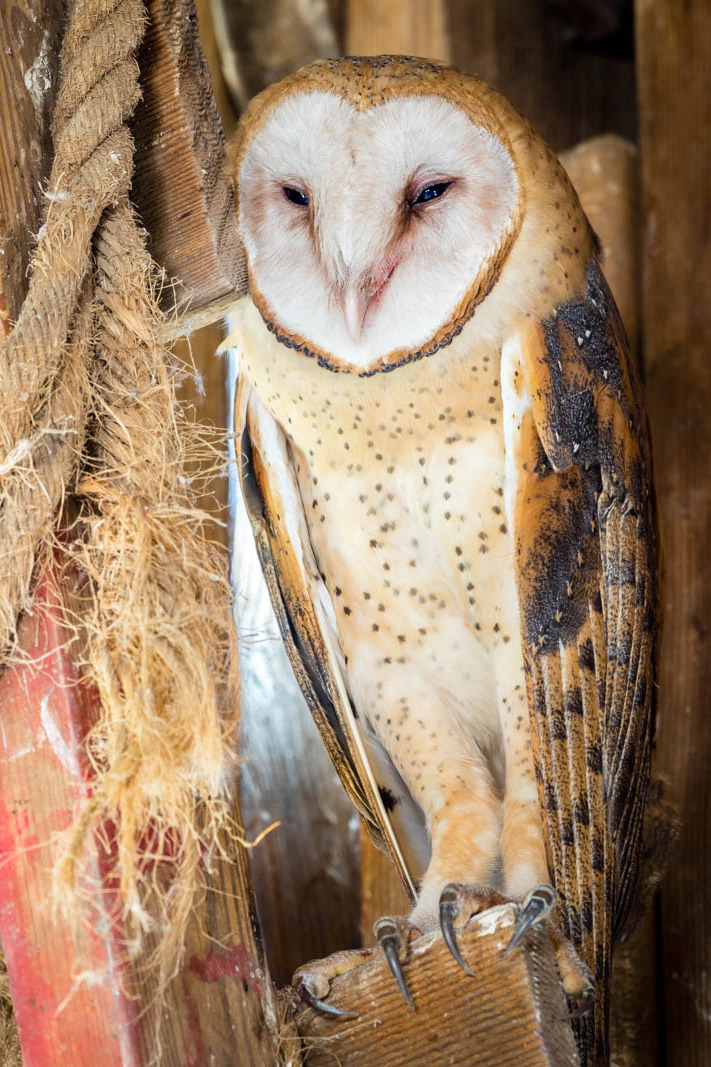 |
Barn Owl (state endangered)
- Medium-sized (16 inches tall)
- Pale tawny and white plumage with long legs; male typically whiter than female
- Flight is moth-like
- Heart-shaped face with brown eyes
- Doesn’t hoot; call usually a long hissing shriek
- Cavity nester – historically in hollow trees and now often found in vacant wooden barns
- Dependent on grassland where it finds its primary food, meadow and prairie voles
Photo: Justin Rogers
|
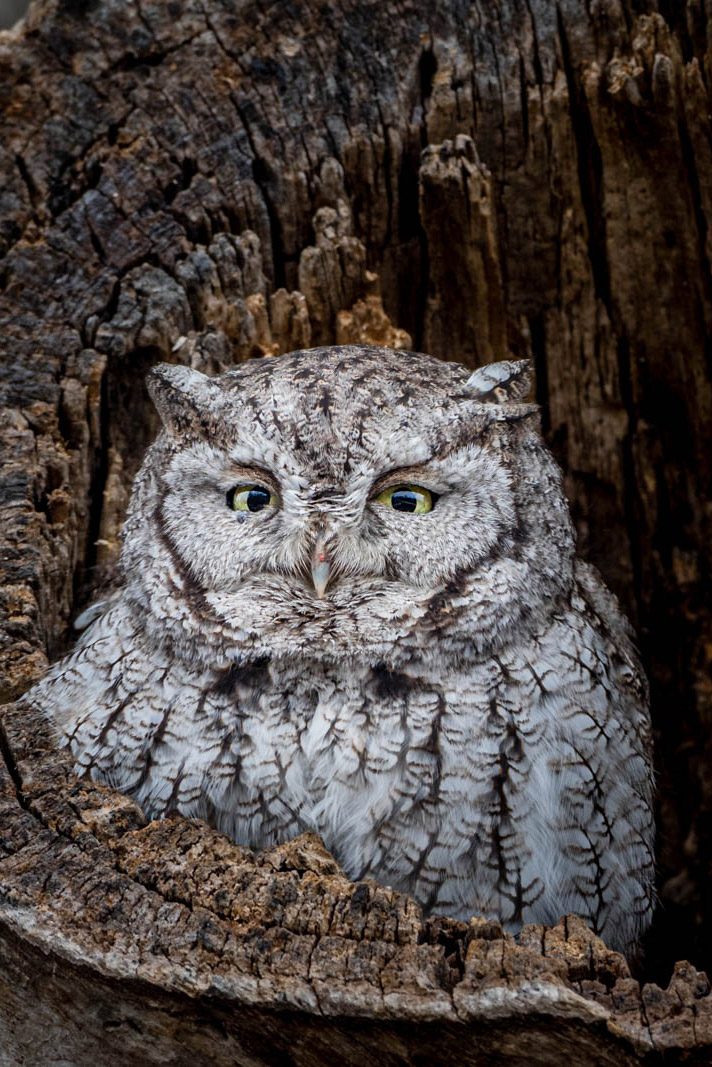 |
Eastern Screech-owl
- Small (8.5 inches tall) and broad-winged
- Plumage color varies from gray to brown to red
- Head has feathery “ear” tufts (plumicorns) and eyes are yellow
- Main song is a descending whinny and also emits a long tremolo or monotone trill
- Cavity nester – often found in towns with large hollow trees
- Found year-round and especially eats small rodents and large insects
Photo: Justin Rogers
|
|
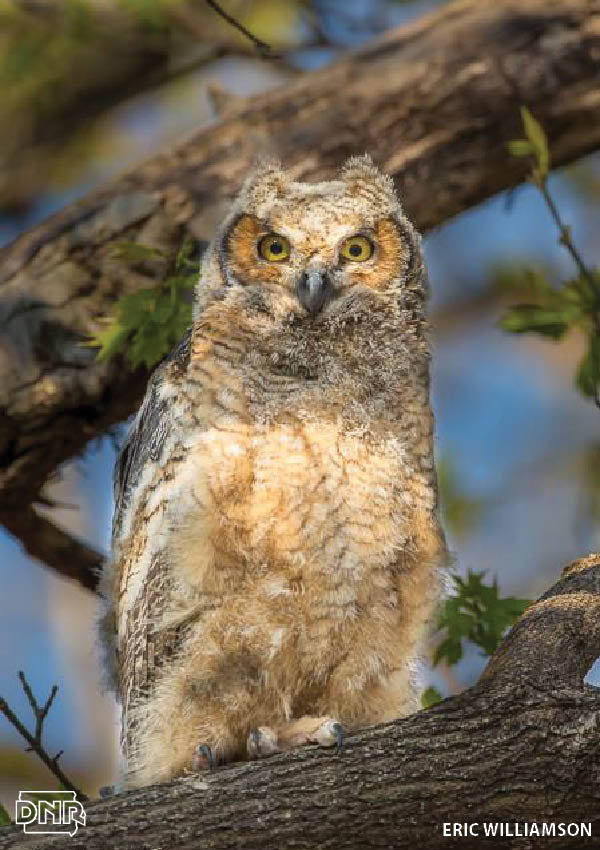
|
Great Horned Owl
- Large (22 inches tall)
- Permanent Iowa resident
- Grayish tawny-brown body with dense barring on underparts and white throat
- Large head with pair of feather tufts and yellow eyes
- Song a deep muffled hooting in series – hoo hoodoo hoo
- Nests in large tree cavities and often lays eggs atop unused red-tailed hawk nests; earliest nesting raptor, often laying eggs in January
- Woodlot and open-country species that eats rabbits, skunks, squirrels, cats, as well as other owls and hawks
Photo: Eric Williamson
|
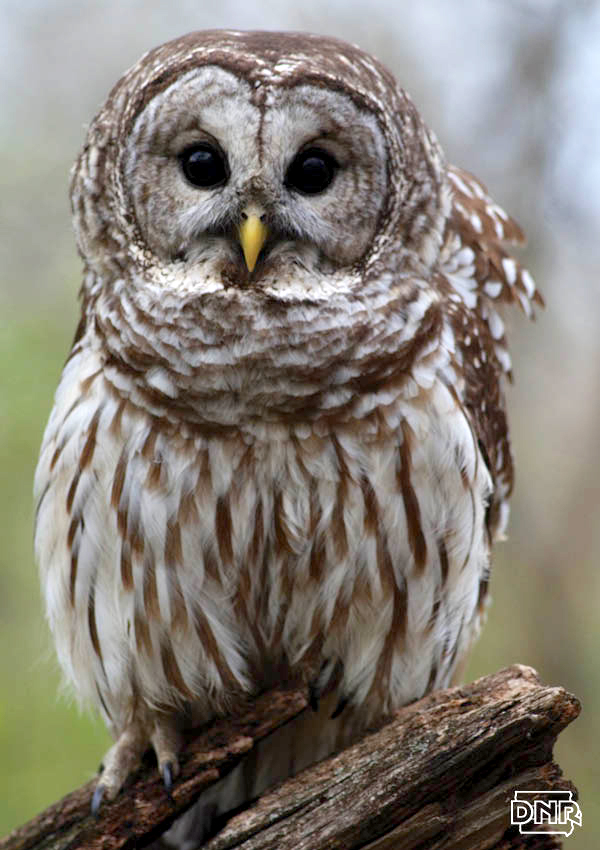 |
Barred Owl
- Medium-large (21 inches tall) stocky gray owl
- Year-round resident
- Rounded head with large dark eyes
- Strong resonant hoot that sounds like “who cooks for you, who cooks for you all”
- Nests in hollow trees and prefers mature forests and wooded waterways for roosting and nesting
- Mainly eats mice and small rodents; also birds (including smaller owls), snakes, frogs, and crayfish, and sometimes fish
|
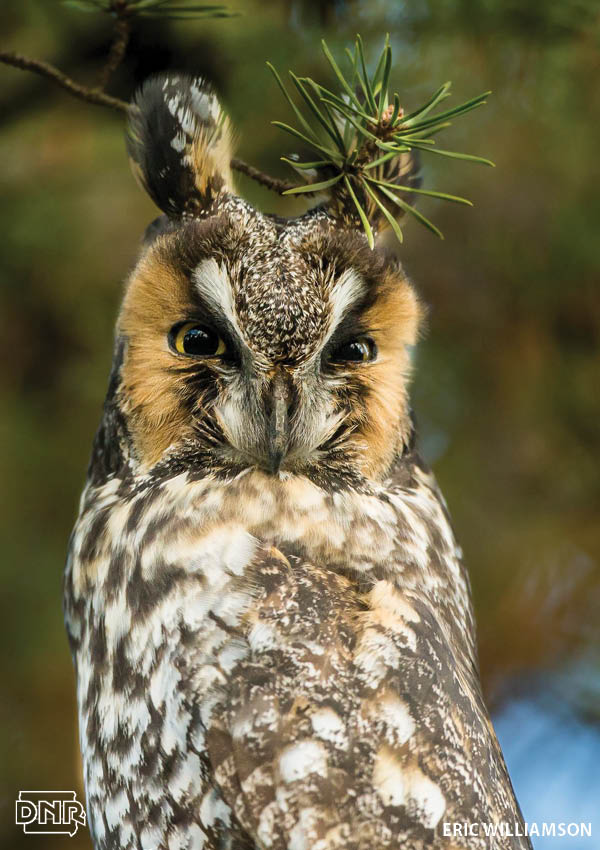 |
Long-eared Owl (state threatened)
- Medium (15 inches tall), long-winged and slender
- Similar color to great horned owl
- Named for long feathered “ear” tufts on head,
- Has yellow eyes
- Male gives a low hoot, and other calls include nasal barks and quiet moans
- Preferred nesting habitat is dense conifer stands adjacent to open grasslands where this owl usually takes over old crow, hawk, or squirrel nests for its own
- Main food is small mammals, especially voles
Photo: Eric Williamson
|
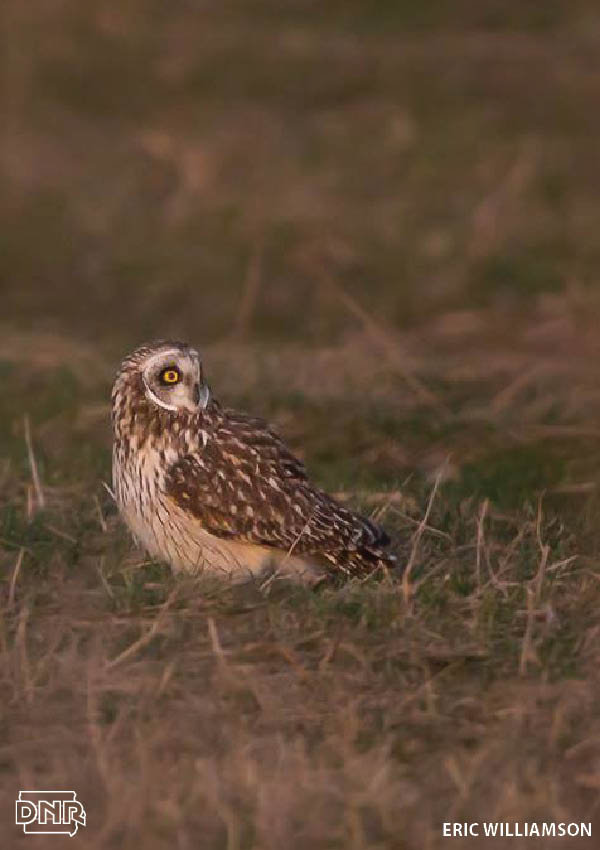 |
Short-eared Owl (state endangered)
- Medium (15 inches tall), long-winged and slender
- Tawny-brown colored plumage with males being lighter color on its underside than females
- Rounded head with very short “ear” tufts
- Has yellow eyes
- Male gives muffled poo poo poo, and other sounds include nasal barks and wheezy notes
- Nests on the ground in large open grasslands (250 acres or more)
- Main food source is meadow and prairie voles
Photo: Eric Williamson
|
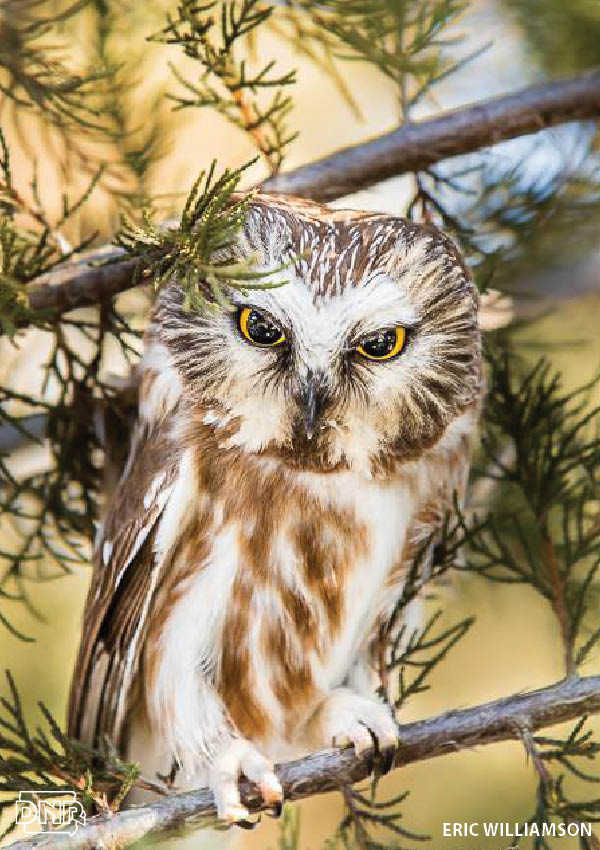 |
Northern Saw-whet Owl
- Smallest (8 inches tall) Iowa owl with buffy brown plumage and
- Common winter visitor
- Rounded head with yellow eyes
- Song is repeated low, whistled toots – poo poo poo, with regular rhythm
- Cavity nester of northern forests, and often found in cedars and other conifers during Iowa winter months
- Main food source is mice, especially those found at the woodland edge
Photo: Eric Williamson
|
|
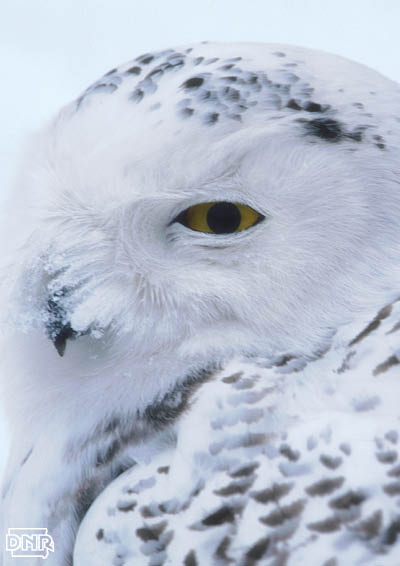
|
Snowy Owl
- Large (23 inches tall)
- Heaviest North American owl
- Mostly snow-white plumage
- Sporadic winter visitor from the arctic tundra
- Rounded head with yellow eyes
- Song of male a deep muffle hoot
- Main food source on breeding grounds is lemmings
|
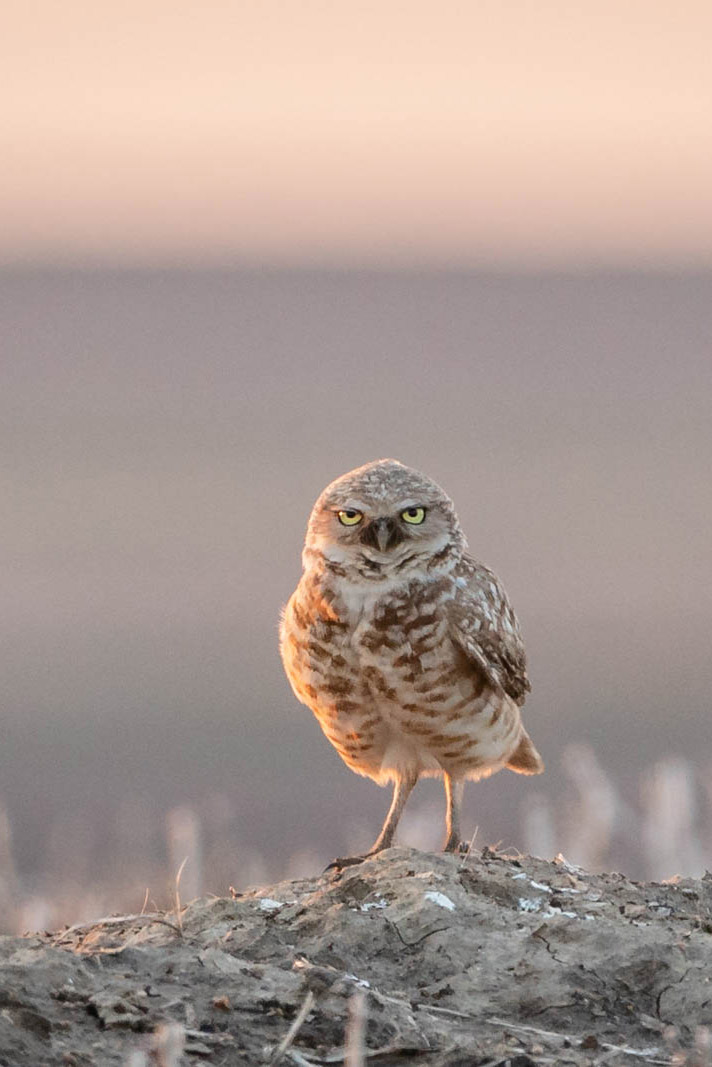 |
Burrowing Owl
- Small (9.5 inches tall), long-legged, and short-tailed
- Grayish-brown plumage with white throat
- Rounded head with yellow eyes
- Male song is a high, nasal, trumpeting coo-coo, coo-coo
- A grassland species and very rare nester in Iowa, where it nests primarily in ground burrows made by badgers
- Eats beetles, other insects, and small mammals
Photo: Justin Rogers
|
For more, check out our Iowa Wildlife and In Your Own Backyard boards on Pinterest or follow us on Instagram.